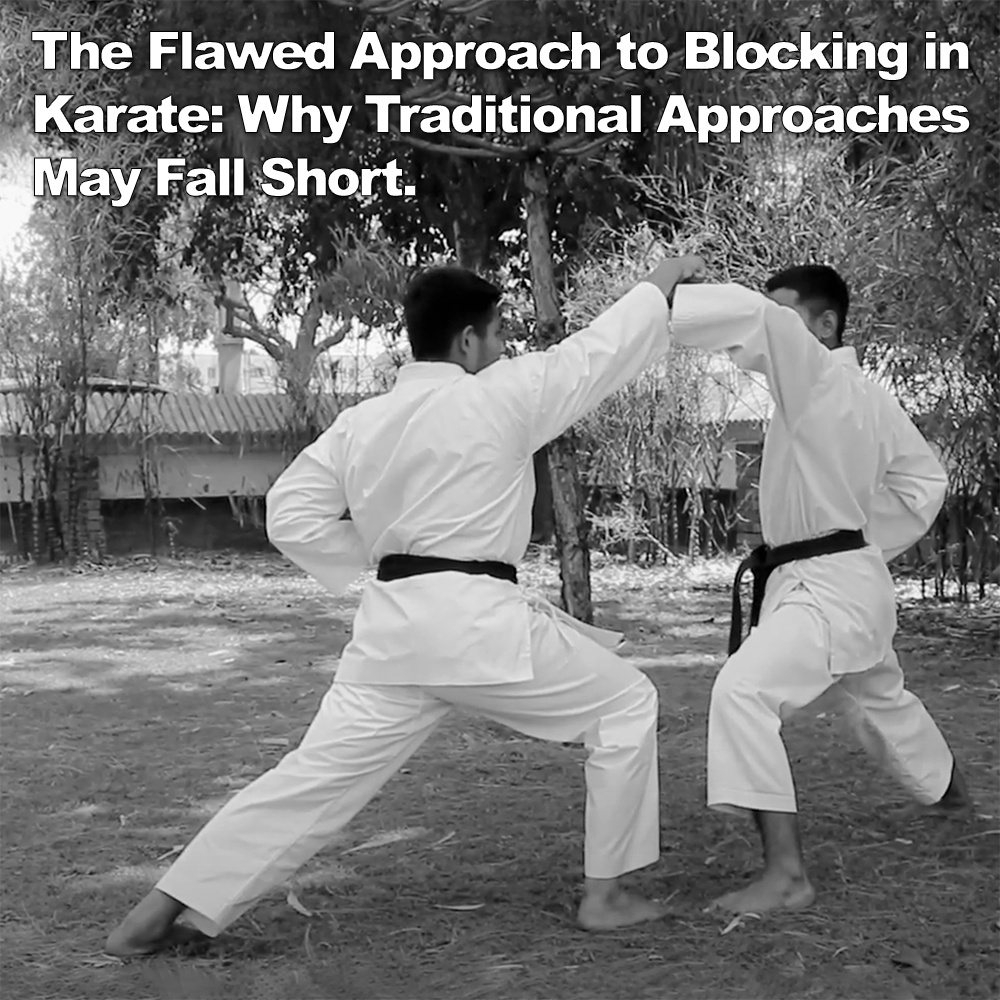
(Approx 2 minute 45 second read)
In a recent article, I depicted a practitioner blocking a Bo with a ‘Jodan Age Uke,’ explaining that using this technique in the way depicted is likely to cause injury. One comment disagreed with my perspective, arguing that this is an appropriate defense against such a weapon.
.
The commenter mentioned that it worked for him when he successfully blocked a baseball bat aimed at his head. However, he also noted that while the bat didn’t hit his head, it did break his arm – reinforcing the very point I was making in the article.
.
Of course, in this case, it is better than having his head severely injured, but this should not be considered the norm.
.
Firstly, let’s get this out of the way: there are far better ways to protect yourself against either a Bo or its modern counterpart, the baseball bat, than blocking in this manner.
.
If this is the approach you choose to follow, you must ask yourself if this is the standard you want to set for your students. Is it acceptable to break your arm or other parts of your body to prevent a weapon from hitting you?
.
You cannot sacrifice one part of your body to save another. Once the initial attack has been stopped, you’re left injured with a broken or damaged limb, leaving the assailant free to attack again, possibly causing further harm. It’s a ridiculous notion.
.
The idea that sacrificing a limb to protect another part of your body is somehow acceptable is not only misguided but also sets a dangerous precedent. The purpose of defense should be to neutralize an attack with minimal harm to yourself, not to trade one limb for another.
.
Trying to stop any technique dead in its tracks is fundamentally flawed. Even if successful, it doesn’t prevent further attacks.
.
When facing a weapon like a Bo or a baseball bat, the force generated is considerable. Blocking it with your forearm might seem effective in theory, but in practice, the impact can cause severe damage, as the commenter admitted. This isn’t just about pain or temporary injury – breaking an arm in such a situation leaves you vulnerable, potentially unable to continue defending yourself, and possibly facing lifelong consequences. This isn’t the movies.
.
This highlights a broader issue in karate today: the overemphasis on blocking as the primary means of defense. In reality, effective defense isn’t about stopping an attack dead in its tracks – apart from avoidance, it’s about pre-emption, redirecting, deflecting, or evading the force of the attack while simultaneously positioning yourself advantageously.
.
True defense should focus on preserving the body and maintaining the ability to continue defending yourself. If we teach our students that it’s acceptable to take a severe injury to avoid another, we’re not preparing them for real-world scenarios where every second and every movement counts. We should instill principles that prioritize avoiding damage altogether through effective movement and strategy.
.
This brings us to a crucial point once again: the importance of context in martial arts training. Techniques like Jodan Age Uke, or any other, should not be diluted or misrepresented by so-called traditional methods. These traditional methods often do not work as advertised. To be effective in reality, they must be understood within the context of real-world application.
.
Techniques should be adapted or reconsidered based on the situation at hand. In a real encounter, especially one involving a weapon, your primary goal is to protect your life and well-being, not to adhere strictly to tradition – tradition that, in reality, was only formalized in the 1930s with little basis in real self-defense.
.
The way we approach defense in karate needs a critical reassessment. It’s time to move beyond outdated practices that could cause more harm than good and embrace strategies that truly protect practitioners. Our goal should always be to emerge from a confrontation unharmed and capable of continuing to defend ourselves and possibly others.
.
.
Written by AC.
.
